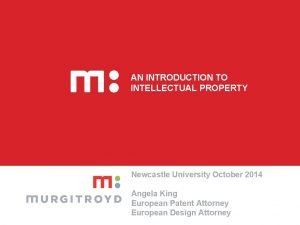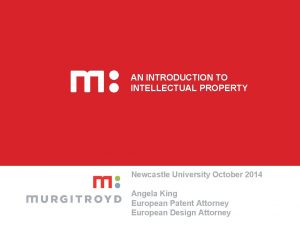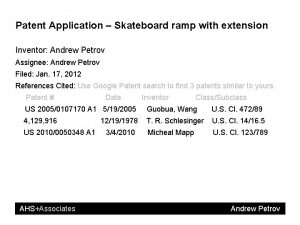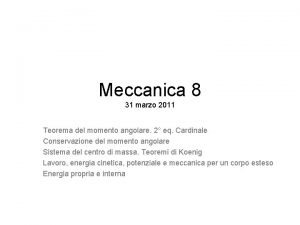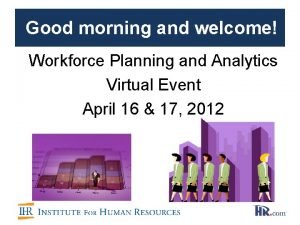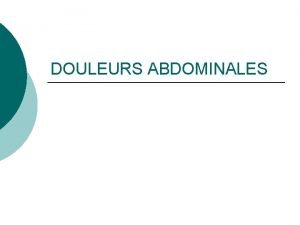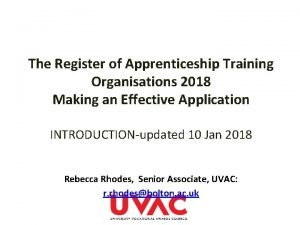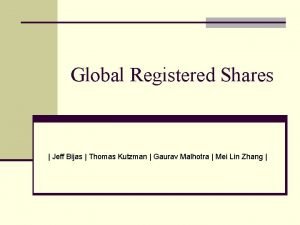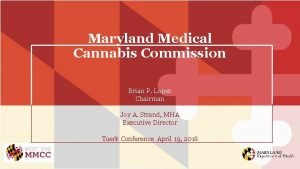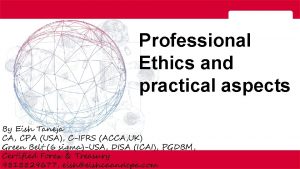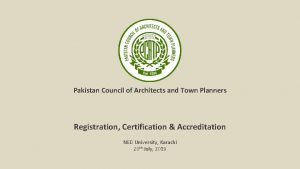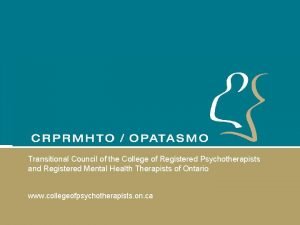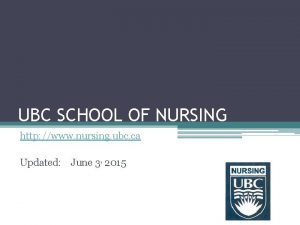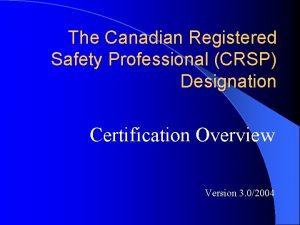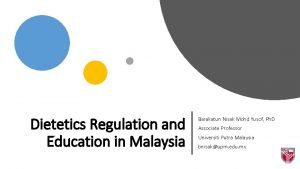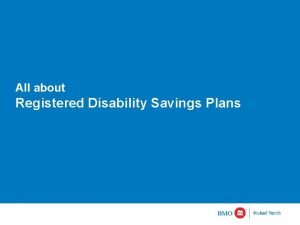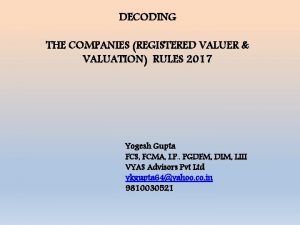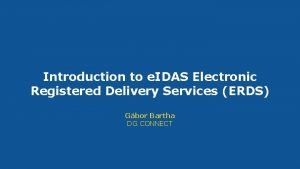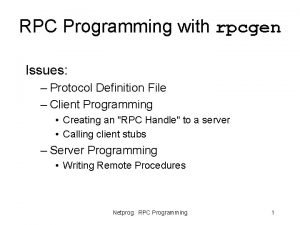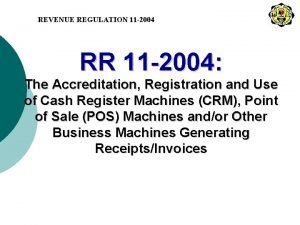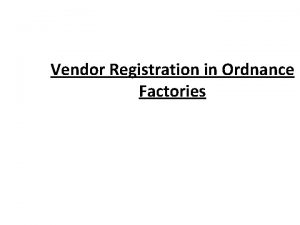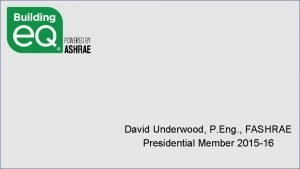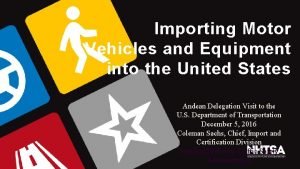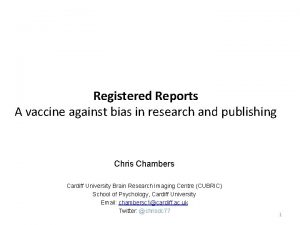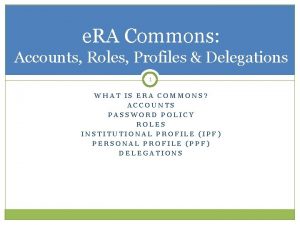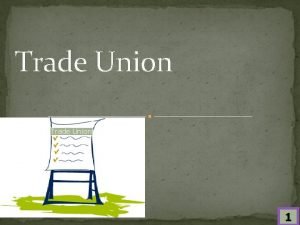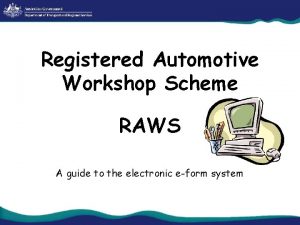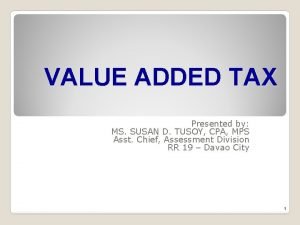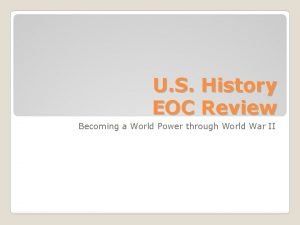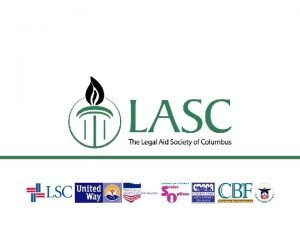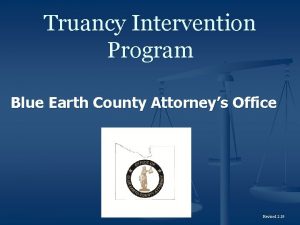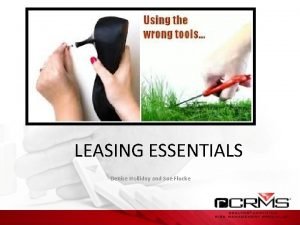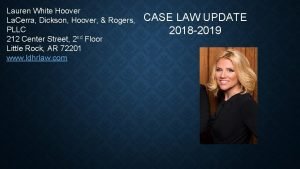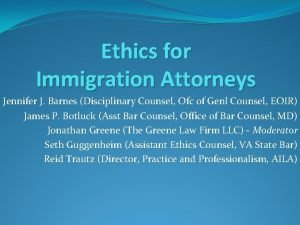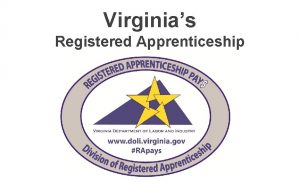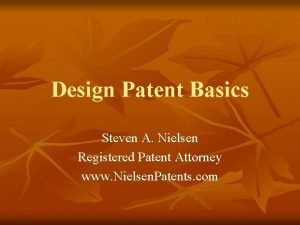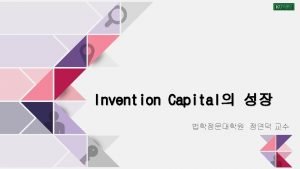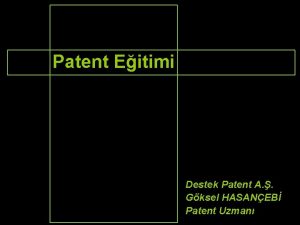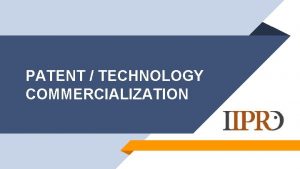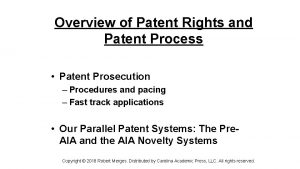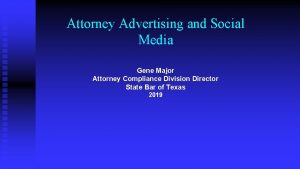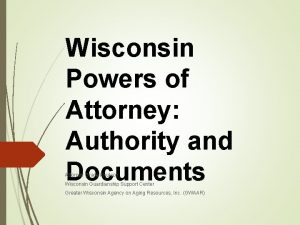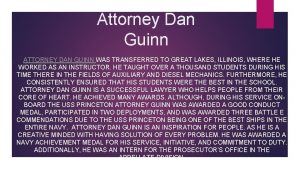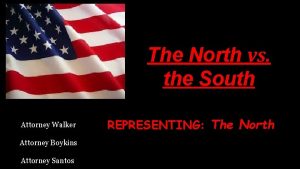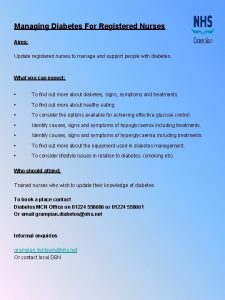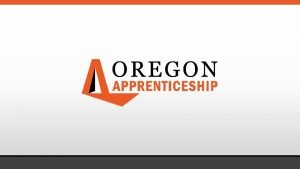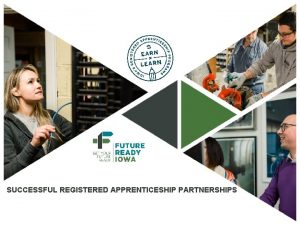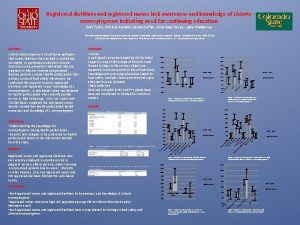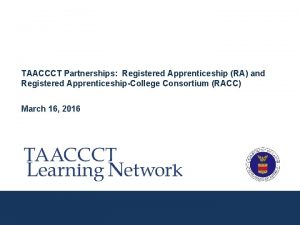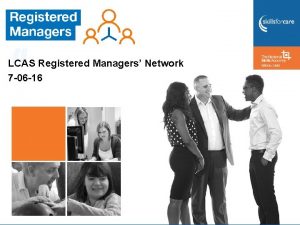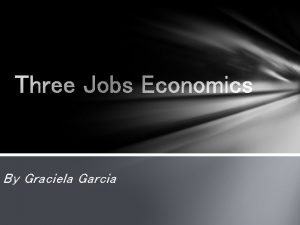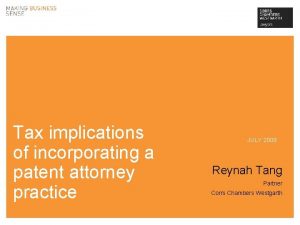Dr Katherine Koenig Registered Patent Attorney Katherinekoenigipworks com






















![Apps, Software, and Business Methods: Patentable? Claim 2: . . . verify[ing] the customer’s Apps, Software, and Business Methods: Patentable? Claim 2: . . . verify[ing] the customer’s](https://slidetodoc.com/presentation_image_h2/e3171dd6f7f769f2330813d9e59b9351/image-23.jpg)














- Slides: 37

Dr. Katherine Koenig Registered Patent Attorney Katherine@koenigipworks. com Patentability and the Patent System

Disclaimer This presentation is not intended to be legal advice. It is however, intended to provide background information and the motivation to seek actual legal advice!

General Topics for Discussion What is a patent? Why should I care about patents? How do I get a patent?

What Is a Patent? Bundle of intangible rights granted by a national or regional patent office United States Patent & Trademark Office (USPTO) European Patent Office (EPO) Canadian Intellectual Property Office (CIPO) African Regional Intellectual Property Organization (ARIPO) Right to exclude others from making, using, offering for sale, or selling the patented invention Rights are territorial Monopoly for a limited time

What Is a Patent? In exchange for… You get… Public disclosure of invention Limited monopoly on that invention

Utility Types of Patents and Patent Applications in the US • Provisional application • Utility patent application, utility patent Design • Design patent application, design patent Plant • Provisional application • Plant patent application, plant patent (USPTO) • Utility patent application, utility patent (USPTO) • Plant variety protection application, Plant Variety Protection Certificate (USDA)

Plant Variety Protection USPTO (plant patent) • • New and distinct Not found in an uncultivated state Asexually reproduced by inventor Prevent others from using, offering for sale, or selling the plant so reproduced, or any of its parts, throughout the US, or importing the plant so reproduced or any parts thereof, into the US • Protects a single genome (infringement may be difficult to prove) • Cannabis varieties are plant patent-eligible (PP 27, 475 – Cannabis plant named ‘Ecuadorian Sativa’)

Plant Variety Protection USDA (Plant Variety Protection Certificate) • New and distinct, uniform, and stable • Sexually reproduced or tuber propagated • Prevent others from selling the variety, offering it for sale, reproducing it, importing or exporting it to/from the US, or using it in producing (vs. developing) a hybrid or different variety therefrom • PVPC covers the protected variety, essentially derived variety may also be eligible under separate certificate • Crop exemption and research (or breeder’s) exemption • USDA used to deny applications for Cannabis varieties, but under new Farm Bill is accepting applications for industrial hemp varieties

Designs Protects an ornamental design Typically easier and faster to obtain a design patent than a utility patent, but the claim scope is narrower



Utility Provisional application Utility application Establishes a filing date and allows you to use the phrase “patent pending” Methods of performing a process, physical products, pharmaceutical compositions, genetically modified plants, improvements in computer functionality (possibly) Gives a year to test the market Not examined Automatically expires one year from filing date Will never mature into an issued patent – must file utility application before expiration of the provisional Undergoes substantive examination, may mature into issued patent if it meets criteria for patentability

Why Should I Care about Patents? Just some examples… Patent Owner Non-owner Attract investors/collaborators and add value to business Patent holder can prevent you from selling your products Create a “moat” that sets you apart from competitors Patent holder can prevent you from selling your products Creates prior art that may block competitors from getting their own patent Can help identify target businesses for acquisition/collaboration May be able to adapt existing applications to cover a competitor’s product Indicators of market/technology trends Must have issued patent to enforce rights against others Prior art obstacles to obtaining your own patent

How Do I Get a Patent? Patenteligible subject matter Strategy Patent prosecution through USPTO

(…and What Do I Do with It Once I Have It? ) Further research and development Marketing Licensing and license maintenance Royalty collection Patent enforcement

How Do I Get a Patent? PATENT-ELIGIBLE SUBJECT MATTER PATENTABILITY SEARCH EXAMINATION

Subject Matter Eligibility Threshold question Patent Eligible NOT Patent Eligible Process Laws of nature Machine Natural phenomena Manufacture Abstract ideas (e. g. , mathematical concepts, certain methods of organizing human activity, mental processes, fundamental economic practices) Composition of matter

Method US 8, 316, 579 Landscape stabilization systems and methods Machine US 5, 392, 735 – owned by The Walt Disney Company Marine mammal communication device

Nature-Based Products: Patentable? Claim: A method comprising providing a pomelo fruit. INELIGIBLE. No difference between this process claim and the fruit itself (product of nature). Claim: A beverage composition comprising pomelo juice and an effective amount of added preservative. ELIGIBLE. No naturally occurring counterpart to the claimed combination. Claim: A kit for preparing goat milk yogurt comprising: Streptococcus thermophilus and Lactobacillus alexandrinus. INELIGIBLE. No differences between claimed bacteria and naturally occurring bacteria. Claim: A yogurt starter culture comprising: goat milk mixed with Streptococcus thermophilus and Lactobacillus alexandrinus. ELIGIBLE. Mixture of bacteria and milk has different characteristics than either species on its own. From USPTO subject matter eligibility examples, Nature-Based Products

Apps, Software, and Business Methods: Patentable? May fall into abstract idea category, but apps, software, and business methods not excluded categories of subject matter To be patent eligible, the claim as a whole must amount to significantly more than the recited exception itself For example, a product or process that applies the exception in a meaningful way Simply implementing a mathematical principle on a physical machine (e. g. , a computer) is not a patentable application of that principle – mere recitation of a generic computer cannot transform a patent-ineligible abstract idea into a patent-eligible invention Examples of what may be considered “significantly more”: Improvements to another technology or technical field Improvements to the functioning of the computer itself Effecting a transformation or reduction of a particular article to a different state or thing

Apps, Software, and Business Methods: Patentable? Claim: A method of restricting software operation within a license for use with a computer including an erasable, non-volatile memory area of a BIOS of the computer, and a volatile memory area, the method comprising the steps of: selecting a program residing in the volatile memory; using an agent to set up a verification structure in the erasable, non-volatile memory of the BIOS, the verification structure accommodating data that includes at least one license record; verifying the program using at least the verification structure from the erasable non-volatile memory of the BIOS; and acting on the program according to the verification. Court: ELIGIBLE. Recites new and specific use of BIOS memory: instead of using BIOS to store startup programs in a computer, BIOS is used to store a verification structure that can be used to determine whether the program stored in volatile memory is licensed to run on that computer. Ancora Technologies, Inc. vs. HTC America, Inc. , 908 F. 3 d 1343 (2018)

Apps, Software, and Business Methods: Patentable? Claim 1: A method of conducting a secure automated teller transaction with a financial institution by authenticating a customer’s identity, comprising the steps of: obtaining customer-specific information from a bank card; comparing, by a processor, the obtained customer-specific information with customer information from the financial institution to verify the customer’s identity; and determining whether the transaction should proceed when a match from the comparison verifies the authenticity of the customer’s identity. INELIGIBLE. Fraud prevention by verifying the identity of the customer is fundamental to business. From USPTO Subject Matter Eligibility Examples: Business Methods
![Apps Software and Business Methods Patentable Claim 2 verifying the customers Apps, Software, and Business Methods: Patentable? Claim 2: . . . verify[ing] the customer’s](https://slidetodoc.com/presentation_image_h2/e3171dd6f7f769f2330813d9e59b9351/image-23.jpg)
Apps, Software, and Business Methods: Patentable? Claim 2: . . . verify[ing] the customer’s identity by: generating a random code and transmitting it to a mobile communication device that is registered to the customer associated with the bank card, reading, by the automated teller machine, an image from the customer’s mobile communication device that is generated in response to a receipt of the random code, wherein the image includes encrypted data, decrypting the code data from the read image, and analyzing the decrypted code data from the read image and the generated code to determine if the decrypted code data from the read image matches the generated code data. . . ELIGIBLE. The combination of steps operates in a non-conventional and non-generic way to ensure that the customer’s identity is verified in a secure manner that is more than the conventional verification process employed by an ATM alone. In combination, these steps do not represent merely gathering data for comparison or security purposes, but instead set up a sequence of events that address unique problems associated with bank cards and ATMs. From USPTO Subject Matter Eligibility Examples: Business Methods

Criteria for Patentability In addition to being directed to patent-eligible subject matter, the claims must be: New Useful Non-Obvious …and not publicly disclosed more than one year before filing date … In the US Most other countries impose an absolute bar

Novelty The claimed invention is not disclosed in a single reference Prior art reference #1 [Nothing else] Claimed invention

Novelty Chair

Obviousness The claimed invention is not disclosed by one or more references Prior art reference #1 Prior art reference #2 Claimed invention Prior art reference #1 Common knowledge in the art Claimed invention

Obviousness Reference #2: Wheels Reference #1: Chair Reference #3: Armrest Chair comprising at least one wheel and at least one armrest

Where Do I Start? Research • Patentability search • Freedom-to-operate search • Cost estimates (patent attorney, prototyping, manufacturing, marketing, shipping, etc. ) Use Caution • Strictly limit the number of people to whom you disclose your idea • If possible, don’t talk about your idea to anyone until a patent application has been filed or until you’ve decided not to file an application • Whenever possible, only disclose your idea to others under a non-disclosure / confidentiality agreement File • Once you’ve decided to pursue patent protection, file an application as soon as possible – the USPTO is now a first to file system (race to the Patent Office) • File the type of application that fits your budget, timeline, and stage of development of the invention

Where Do I Start? Don’t talk about your idea to anyone until you’re ready to talk with a patent attorney Best practice: Keep the invention secret (not only to prevent idea theft, but also to avoid starting the one-year bar) File at least a provisional application (or utility patent application) Discuss your idea with prototypers, manufacturers, potential investors, etc. after the application has been filed – and use non-disclosure/confidentiality agreements May not always be practical/possible to invest the money into filing an application until you’ve vetted the idea, in which case I suggest: Always disclose your idea under a non-disclosure/confidentiality agreement Conduct a patentability search before disclosing to potential investors, partners, collaborators Take good notes If you’re working as a team, identify who conceived of which features of the invention Inventors must be properly named in a patent application, determined by the claims

Patentability Search As a first step, conduct a brief search yourself Google Patents (https: //patents. google. com/) USPTO databases: Pat. FT (http: //patft. uspto. gov/netahtml/PTO/search-bool. html) for issued patents and App. FT (appft. uspto. gov/netahtml/PTO/search-bool. html) applications Regional databases Even if you don’t find your product for sale, that doesn’t necessarily mean it hasn’t been patented, applied for, or publicly disclosed Recommend having a more formal search conducted by a patent attorney (or search company)

Patentability Search

Patentability Search Benefits Identify competitors Identify potential collaborators/partners Identify patents for license or purchase Important part of business due diligence and can be attractive to investors or licensees Enhance understanding of relevant field of technology Reinforce excitement in the idea Economy: if you discover problematic references, may save the cost of filing patent application(s) before you invest too much money and time into the project

Preparing and Filing the Patent Application Invention Disclosure • Discuss with patent attorney • Formulate filing strategy Draft Application • Attorney drafts • Discussion and revision Approximately 1 week to 3 months File application in appropriate office

Which Type of Application to File? Design = designs Plant = plants Utility: Provisional Utility • Name inventors • Written description • Informal drawings ok • Filing fee • Name inventors • Written description, at least one claim, formal drawings (if necessary) • Oath/declaration from each inventor • Filing, search, and examination fees Provisional Utility Product is still in beta stage Product is fully developed Need time to evaluate project Want to reduce time to patent Need to file quickly Examination desired Budget is limited Want to file abroad

Preparing and Filing the Patent Application File App Examination Not allowed File Allowed Examination Postexamination Successful Pay issue fee File Response Abandon Not successful Appeal Move to issuance Pay issue fee RCE Approximately 3 years Postissuance Maintenance fees

Thank you! katherine@koenigipworks. com
 Patent attorney newcastle
Patent attorney newcastle Patent attorney newcastle
Patent attorney newcastle Patent attorney side business drafting drawings
Patent attorney side business drafting drawings Cơm
Cơm Dậy thổi cơm mua thịt cá
Dậy thổi cơm mua thịt cá Teorema di konig
Teorema di konig Howard koenig
Howard koenig Syndrome de koenig
Syndrome de koenig Registered training organisation list
Registered training organisation list Global registered share
Global registered share Brian lopez maryland
Brian lopez maryland Scope of registered valuer
Scope of registered valuer Biol 2420 lone star college
Biol 2420 lone star college Pcatp logo
Pcatp logo Scope of psychotherapy
Scope of psychotherapy Ubc vancouver nursing
Ubc vancouver nursing Board of canadian registered safety professionals
Board of canadian registered safety professionals Malaysian dietitian association
Malaysian dietitian association Registered disability savings plan bmo
Registered disability savings plan bmo Appointment of registered valuer under companies act, 2013
Appointment of registered valuer under companies act, 2013 Electronic registered delivery service
Electronic registered delivery service Clnt_create: rpc: program not registered
Clnt_create: rpc: program not registered Registered nurse requirements california
Registered nurse requirements california Rr 11-2005
Rr 11-2005 Ordnance factory vendor registration
Ordnance factory vendor registration Registered provider
Registered provider Nhtsa registered importers
Nhtsa registered importers Registered report
Registered report Commons registered organizations
Commons registered organizations Liabilities of registered trade union
Liabilities of registered trade union Raws certified workshop
Raws certified workshop Subsidiary sales journal for vat registered taxpayer
Subsidiary sales journal for vat registered taxpayer This area along the german/belgian border was demilitarized
This area along the german/belgian border was demilitarized Retaliation attorney franklin county
Retaliation attorney franklin county Truancy consequences
Truancy consequences Leasing essentials
Leasing essentials Traci lacerra attorney little rock
Traci lacerra attorney little rock Jennifer barnes attorney
Jennifer barnes attorney
